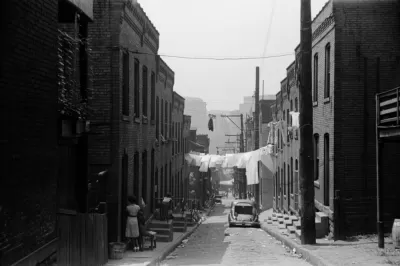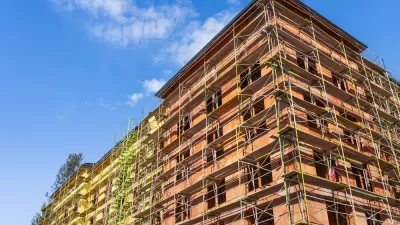A new journal article calls out the academic community of planning and urbanism for relying too much on the usual suspects when researching marginalization and inequality, and assuming too much about what makes a neighborhood "normal."

Junia Howell, a sociology professor with the University of Pittsburgh and Kinder scholar, has published a recent article in the journal Sociology Compass that exposes the "the unstudied reference neighborhood" that could contribute to a more complete understanding of inequality and marginalization.
An article by Leah Binkovitz provides insight into the implications of the study:
After naming some of the landmark pieces of neighborhood-focused research that have helped shape urban policy for decades, Howell notes, "with few exceptions, neighborhood studies only examine a small slice of urban neighborhoods." Over the years, scholars have spent time in Italian 'slums,' Puerto Rican neighborhoods and majority black neighborhoods, Howell notes, but white, middle-class neighborhoods "are rarely studied in the literature."
Repeatedly associating specific neighborhoods with inequality and marginalization, "reinforces the notion that impoverished and marginalized communities are distinct and exist in stark juxtaposition to all other communities," says Howell in a quote from the article.
As a result, scholarship suffers, policy, and public discourse. Howell discusses the implications of the article in the video below, but Binkovitz also gives a lot more to think about in the sourced article.
FULL STORY: The Unstudied Neighborhood

Planetizen Federal Action Tracker
A weekly monitor of how Trump’s orders and actions are impacting planners and planning in America.

Map: Where Senate Republicans Want to Sell Your Public Lands
For public land advocates, the Senate Republicans’ proposal to sell millions of acres of public land in the West is “the biggest fight of their careers.”

Restaurant Patios Were a Pandemic Win — Why Were They so Hard to Keep?
Social distancing requirements and changes in travel patterns prompted cities to pilot new uses for street and sidewalk space. Then it got complicated.

Platform Pilsner: Vancouver Transit Agency Releases... a Beer?
TransLink will receive a portion of every sale of the four-pack.

Toronto Weighs Cheaper Transit, Parking Hikes for Major Events
Special event rates would take effect during large festivals, sports games and concerts to ‘discourage driving, manage congestion and free up space for transit.”

Berlin to Consider Car-Free Zone Larger Than Manhattan
The area bound by the 22-mile Ringbahn would still allow 12 uses of a private automobile per year per person, and several other exemptions.
Urban Design for Planners 1: Software Tools
This six-course series explores essential urban design concepts using open source software and equips planners with the tools they need to participate fully in the urban design process.
Planning for Universal Design
Learn the tools for implementing Universal Design in planning regulations.
Heyer Gruel & Associates PA
JM Goldson LLC
Custer County Colorado
City of Camden Redevelopment Agency
City of Astoria
Transportation Research & Education Center (TREC) at Portland State University
Camden Redevelopment Agency
City of Claremont
Municipality of Princeton (NJ)





























